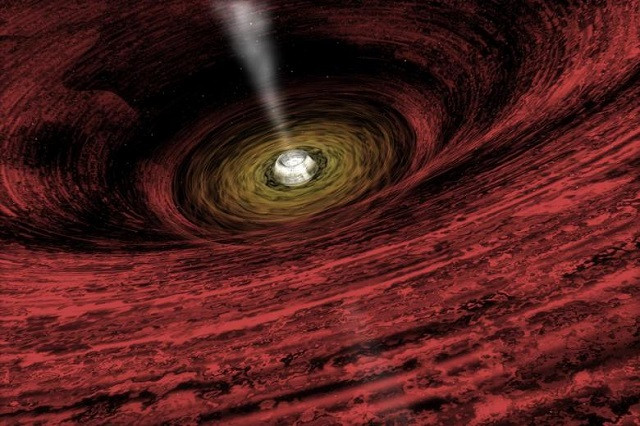French, Chinese mission to explore universe's most powerful explosions
‘Space Variable Objects Monitor’ is scheduled to blast off on a ‘Chinese Long March 2C’ rocket, from China on Saturday

This weekend, a French-Chinese ‘telescope satellite’ is set to blast off, on a mission to hunt down ‘gamma-ray bursts’. These are the most powerful explosions in our universe.
The light from these almighty blasts has travelled billions of light years to reach planet Earth. Due to this, scientists believe they may hold answers to mysteries surrounding the universe’s youth. However, these flashes are so brief that they have proved difficult to observe.
Hoping to learn more, the ‘Space Variable Objects Monitor’ (SVOM) is scheduled to blast off on a ‘Chinese Long March 2C’ rocket, from the Xichang launch site (in China’s Sichuan province on Saturday).
The spacecraft, which has two Chinese and two French instruments on board, will then orbit 625 kilometres (390 miles) above Earth.
Chen Lan, who is an analyst specialising in China’s space programme, highlighted the “political significance” of the joint mission. During a “dark time” for relations between China and the West, the mission “shows that scientific cooperation can still be continued despite difficulties,” he told members of the press.
SVOM’s mission is to use its X-ray vision, to track down the source of gamma-ray bursts. These are detected in the sky, around once a day. This cosmic investigation began back in “the middle of the Cold War,” stated Bertrand Cordier, who is the chief scientist for the French contribution to ‘SVOM’.
In 1967, US satellites monitoring whether nations were complying with a nuclear test ban treaty happened to spot a brief flash of gamma rays, which can also be produced by nuclear blasts.
Read more: Pakistan rockets forward in space technology
“They thought they were dealing with a nuclear explosion on Earth, before realising that it came from space,” Cordier, told a press conference. “Since then, we have been trying to understand the origin of these objects.” Several missions, including NASA’s Swift telescope, have already shed some light on these bright enigmas.
Considered to be the most powerful events in the known universe, these bursts are flashes of the highest-energy light, which emit gamma rays and last anywhere between a fraction of a second and tens of seconds.
The explosion is followed by an “afterglow” which can last hours and “crosses the entire universe to reach us,” says Susanna Vergani, from the ‘Paris Observatory’.
Shorter bursts are thought to be caused by massive neutron stars smashing into one another, or a neutron star being swallowed by a black hole. Longer bursts are believed to be from some of the universe’s earliest stars (massive beasts far larger than our Sun), going ‘supernova’.
The most distant and therefore earliest ‘gamma-ray’ burst identified (so far) came from just 630 million years after the Big Bang, when the universe was five percent of its current age.
Gamma-ray bursts allow scientists to “investigate the distant universe,” including the mysterious chemical process that birthed the first stars and galaxies, Vergani stated.
But the blasts could also hold other clues to long-burning cosmic mysteries. Because the light from these explosions traverses billions of light years, it “bears the imprint of all the gas clouds” it passed through,“ Vergani said.


















COMMENTS
Comments are moderated and generally will be posted if they are on-topic and not abusive.
For more information, please see our Comments FAQ